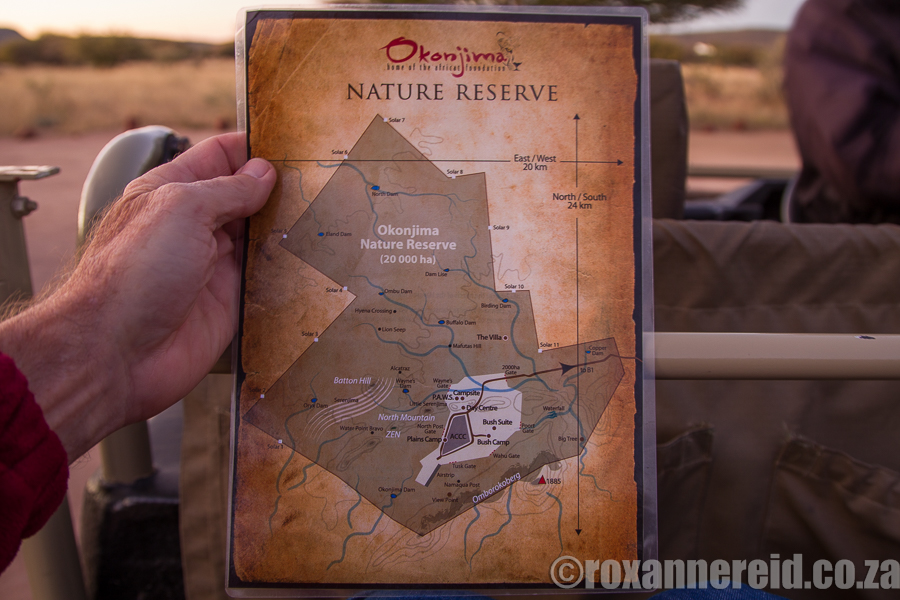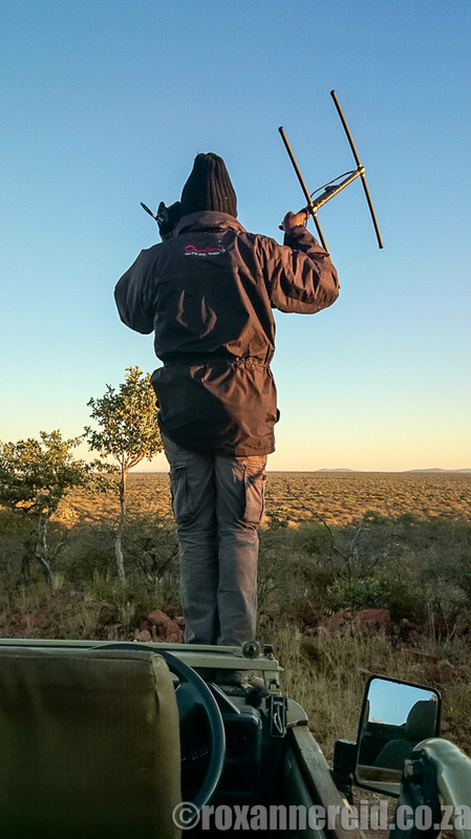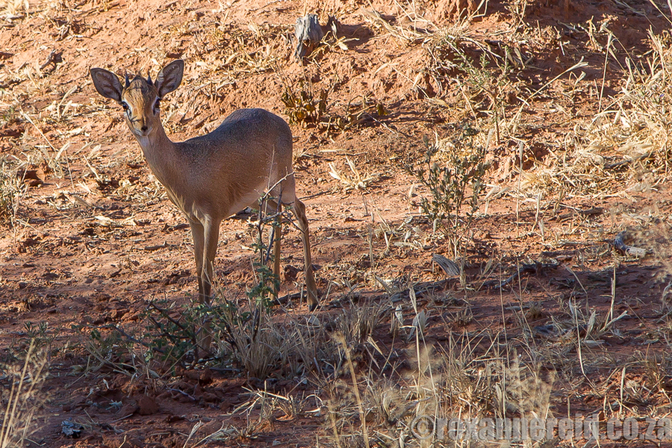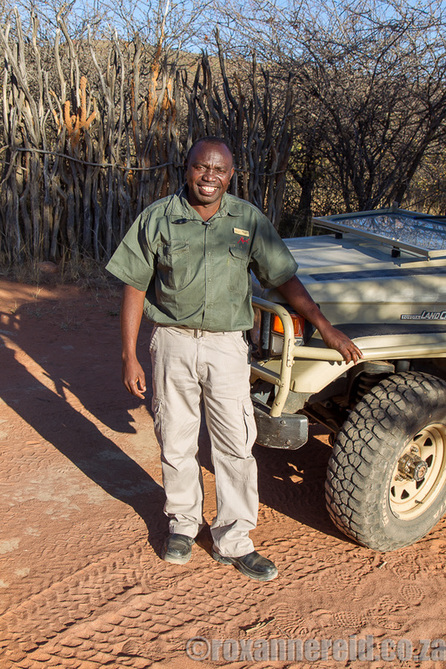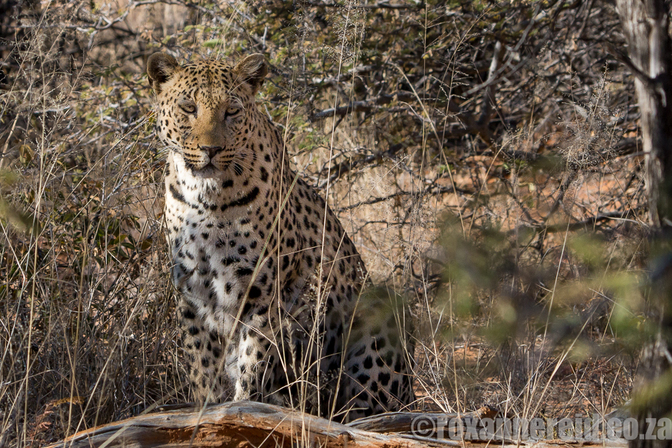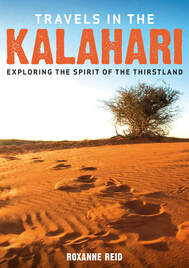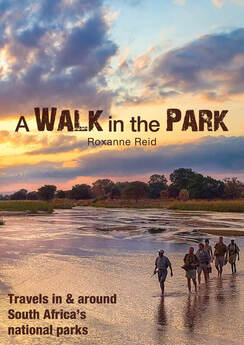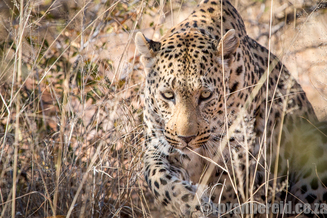
We’ve tracked cheetahs in the Kgalagadi Transfrontier Park, lions near Mapungubwe National Park and desert-adapted rhino in Kunene. But this was our first time tracking leopards at Okonjima Nature Reserve in Namibia and our expectations were not high.
‘Between 1970 and 1990 this area was normal farming,’ Martin explained. Then the Hanssen family who own it had a change of heart and gradually expanded the original 6000ha to the 22 000ha today, with conservation of Big Cats as their aim. ‘The leopards occurred naturally on the reserve and researchers are still busy with a density study,’ said Martin. But for now there are 15 collared leopards (they use box traps) and more they’ve spotted on camera traps but haven’t collared yet. Estimates are that there may be around 35 leopards.
‘We’re busy with habitat restoration,’ he explained. ‘Because of commercial farming here in the past, there’s been overgrazing, resulting in erosion. Today, there’s a problem with bush encroachment and we’re opening up the bush using a bull dozer to get open plains for cheetah to hunt. The two main species we’re removing are sickle bush and black thorn.’
Long before we found any leopard, we saw some of the other creatures of the Okonjima Nature Reserve – kori bustard, jackal, a giraffe with a baby, gemsbok, dik-dik, kudu, impala, red hartebeest and warthog. We also saw spotted hyena tracks.
Just inside the reserve, Martin had wiggled the aerial around trying to catch a signal from one of the collared leopards. No luck. He stopped again a few minutes later. Still no signal. Then on a slight rise he tried again, this time picking up not one but two signals. One he thought might be on the mountain to our left, where we wouldn’t be able to get close enough. The other was to our right in an open area we could see in the distance with the naked eye.
It was 7am, about 45 minutes since we’d left camp. We followed the first signal and after a few dead ends, we finally found a leopard known as Shanti in the bushes. She was very cryptic at first, but then our patience was rewarded when she crossed the track in front of us.
We followed her further into the bushes. A gemsbok snorted with alarm and ran off. A cacophony of guineafowl helped us track her whereabouts even without the aerial. Then she broke into a trot. ‘She may have heard or smelled that other leopard whose signal we picked up and she’s trying to avoid her,’ whispered Martin.
He thought she might be on her way to a waterhole about 300m away so we went there to wait quietly. Eventually she appeared and we could watch her sit and lie down in the dappled shade near a termite mound, very close. A few pesky tufts of grass and thorn twigs made for less than ideal photographic conditions, but watching with the binos was grand.
We’ve definitely had better leopard sightings and got better leopard photos, but the thrill here was to follow the leopard, knowing she was there even before we could catch a glimpse of her. It made me realise just how many leopards we miss in game reserves!
By 8:10am she’d had enough of us – or caught a whiff of the other leopard – so she made off in the direction of the mountain where she might feel safer, but we couldn’t follow.
We took a moment to absorb what had happened, grinning like a jackass eating cactus. Then Martin drove off in search of the second leopard whose signal we had picked up earlier. ‘It’s the signal for another female called Jojo, a seven-year old with two ten-month-old cubs,’ he said. Cubs? I was wriggling in my seat with excitement.
It didn’t take us more than 15 minutes to find her walking in the road. She squatted to poo, which Martin collected for research purposes. You can tell a lot about a predator’s habits from the hair, bones and teeth in its droppings.
She rubbed her head against a tree and sprayed, ways of leaving her scent around her territory. I was disappointed that her cubs weren’t with her. Martin explained that cubs stay with the mom till they’re two years old, then they also become solitary and territorial. ‘The females go into the male’s territory when they’re in oestrus, so they seek out the male, not the other way around.’ The females practise what he called ‘paternal confusion’ by mating with various different males so that they’ll accept the cubs rather than killing them.
‘Shanti’s mother has raised many cubs and we thought she was done now because she's 14 years old. But then she produced another cub a couple of months ago,’ he said. Shanti herself will only be sexually mature in another year or two, and will probably produce her first cubs at three or four years old.
Leopards will hunt or scavenge by day or night. ‘Here where they don’t have much competition, they often hunt in the day,’ he said. ‘There are no lions, only two wild dogs, six cheetah and three spotted hyena at the moment. We don’t know how many brown hyena.’ (Not long after our visit the wild dog number went up to four and cheetahs to ten.)
I was glad she didn’t make an attempt at a hunt while we watched; the screaming of piglets would have been a harsh ending to a wonderful morning. We’d expected only a 50% chance of seeing one leopard; instead we’d found two. It was one of those high-five moments that make wildlife spotting so rewarding.
Like it? Pin this image!
